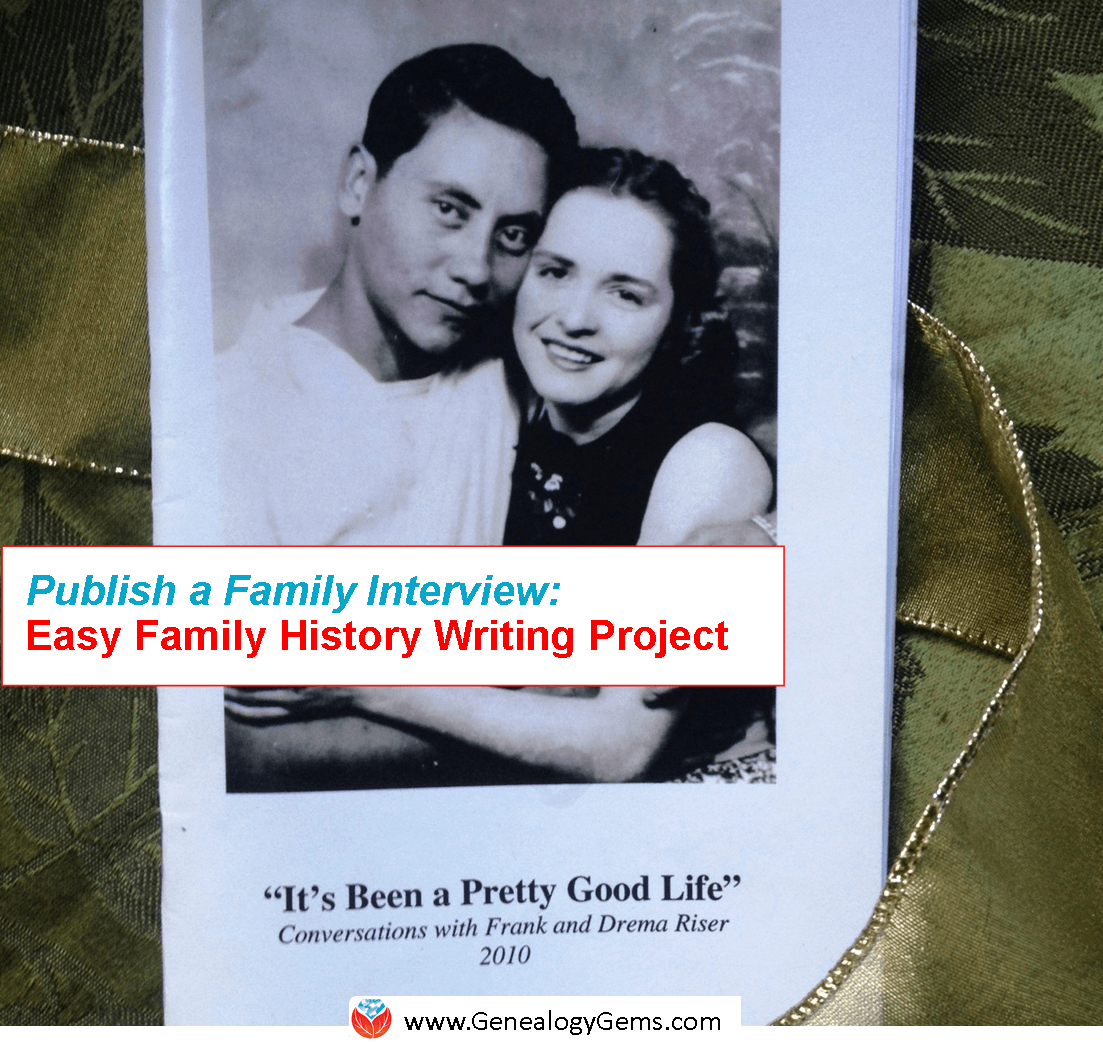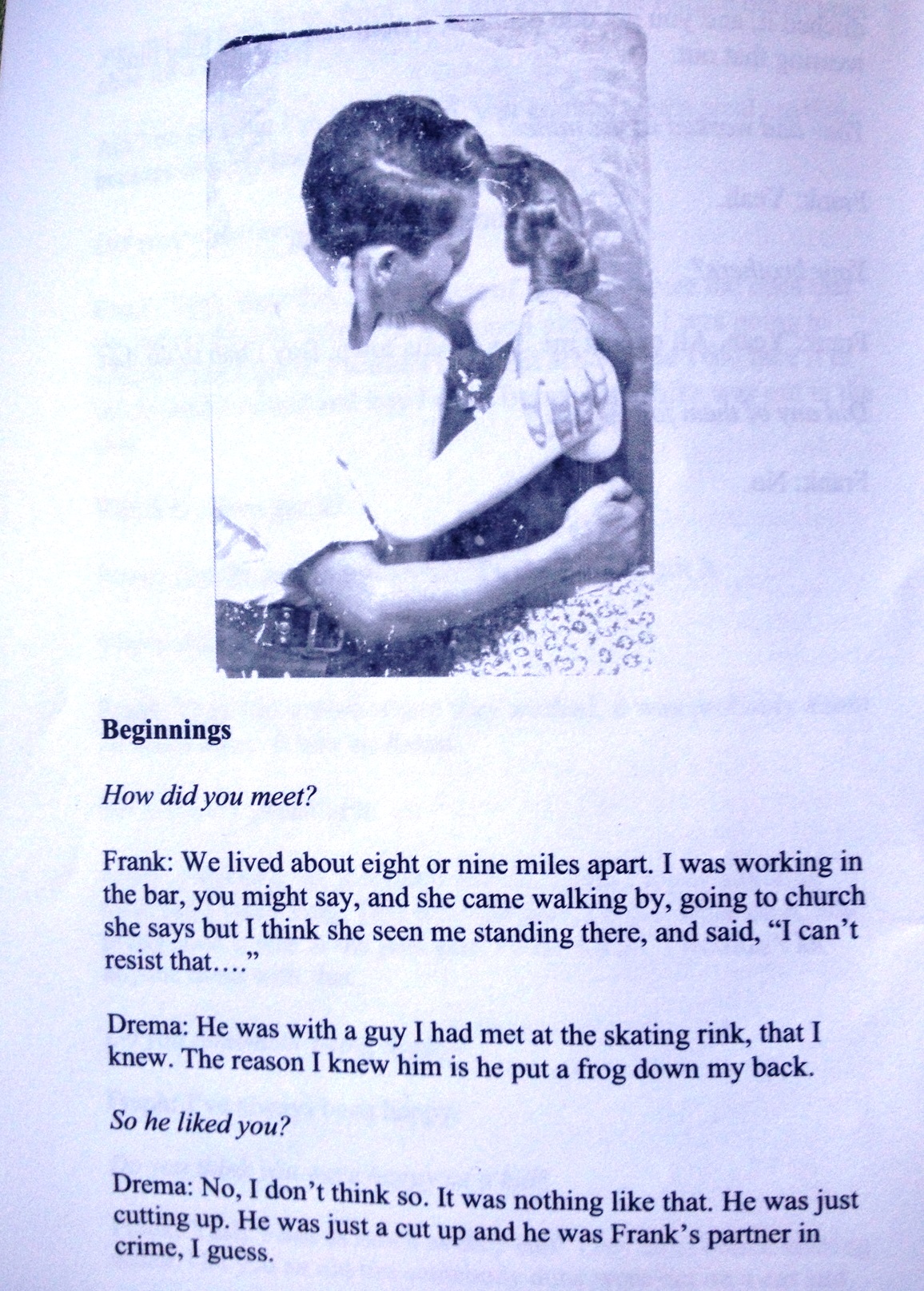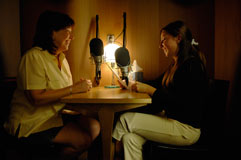Easy Project to Write Your Family History: Publish a Q&A
This 3-step project will help you capture a relative’s life story in plenty of time for the holidays!
Reconstructing the life stories of our ancestors can sometimes feel like squeezing water from a stone. By comparison, gathering the life stories of the living can be like turning on a tap. All you have to do is direct and catch the flow.
Turn your family history interviews into a beautiful book–just in time for holiday sharing–with this three-step project. Simplify it or doll it up, depending on your time, talents and what you have to work with. Just do it! Write your family history! Here’s the basic outline:
1. Record an interview. Invite a relative to chat with you about his or her life stories. Decide together what the relative WANTS to talk about: childhood memories? Stories about a certain loved one or a particular time period? A little of everything? Consider using a list of life story questions or memory prompts like those you can find in my book, My Life & Times: A Guided Journal for Collecting Your Stories.
Before you begin, be clear that your goal is to write these stories up for the family. Meet in person, over the phone or by Skype (click here to learn how to record a Skype conversation). With permission, record the conversation. Ask plenty of follow-up questions, but otherwise keep your own comments to a minimum. For more interviewing tips, listen to this free Family History Made Easy podcast episode.
2. Transcribe the interview. After you’ve finished your chat, go back and type up the interview. Give yourself plenty of time: this takes longer than you think. Consider asking a fast-typing relative to help or hire a transcription service (here’s one option). Type things just as you hear them, incomplete sentences and all. Don’t include anything your loved one wants to keep “off the record.”
3. Print the transcript. Save an unedited copy of the typescript in your permanent files. Edit it a little to make it “reader-friendly” if you want to. Print it out. Add any extras, like family tree charts or copies of photos. Bind it however you prefer. (Genealogy Gems Premium website members can check out Lisa’s 3-part Premium podcast series on self-publishing: episodes 52-54). Share copies with loved ones: they make great holiday gifts.
Here’s a page from a sample project I did. It’s a simple stapled book, printed in landscape (sideways) format on regular-sized paper. I left the narrative in the format  of a simple Q&A, just like it was spoken. I did edit slightly for clarity and flow. My questions are in italics and the speakers are identified (I was interviewing a husband and wife together). I added a few photos.
of a simple Q&A, just like it was spoken. I did edit slightly for clarity and flow. My questions are in italics and the speakers are identified (I was interviewing a husband and wife together). I added a few photos.
I shared copies of this book with every family member as holiday gifts a few years ago. Now everyone has a special legacy gift featuring this couple: their children, their grandchildren and even their great-grandchildren.
Now is the time for you to write a portion of your family history, and I’m here to help and support you. I will be conducting a fun and productive one-week workshop called the Genealogist’s Essential Writing Workshop at Family Tree University starting October 19. You can do this and I’m here to help!
Additional Family History Writing Resources from Genealogy Gems
- How to Reconstruct Early Childhood Memories and Stories
- Tell Your Ancestor’s Story with Social History
- How to Save Videos in Evernote (like family history interviews)
Disclosure: This article contains affiliate links and Genealogy Gems will be compensated if you make a purchase after clicking on these links (at no additional cost to you). Thank you for supporting Genealogy Gems!







